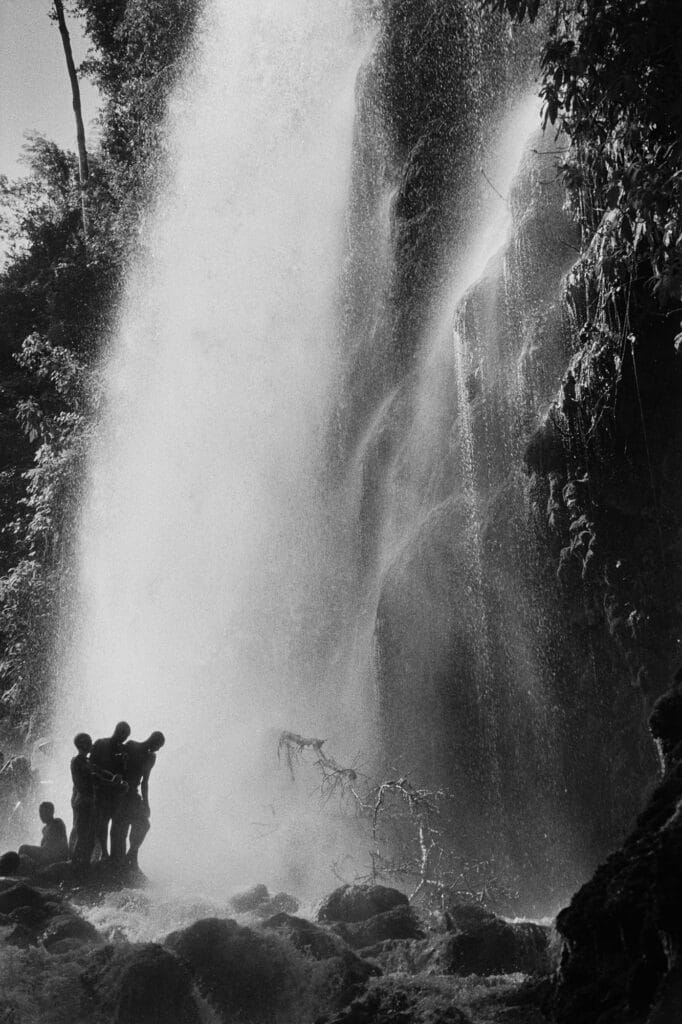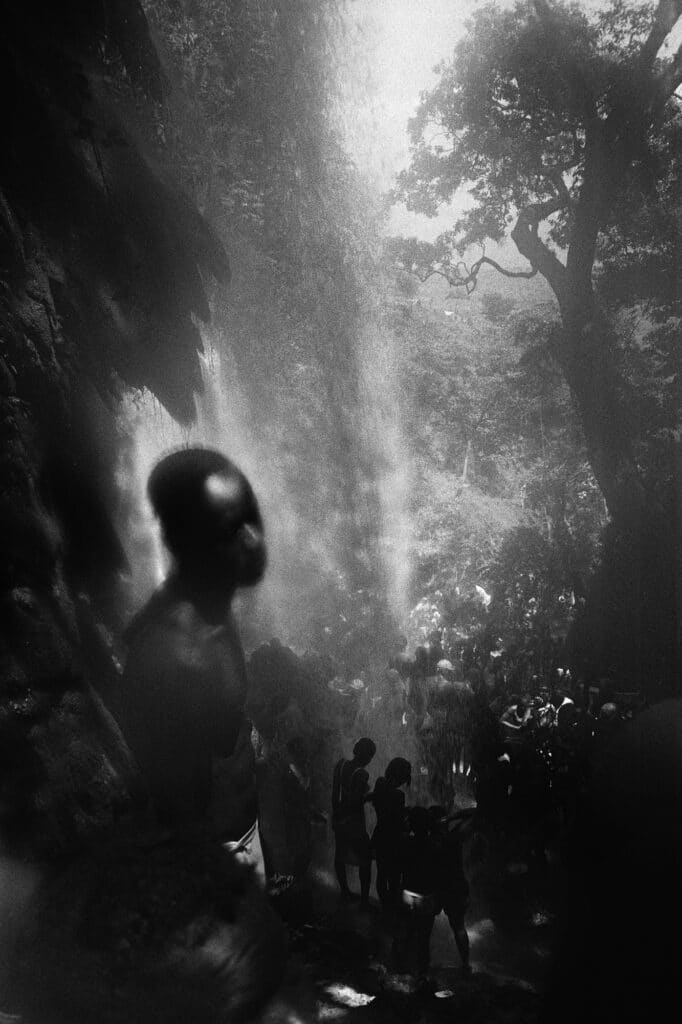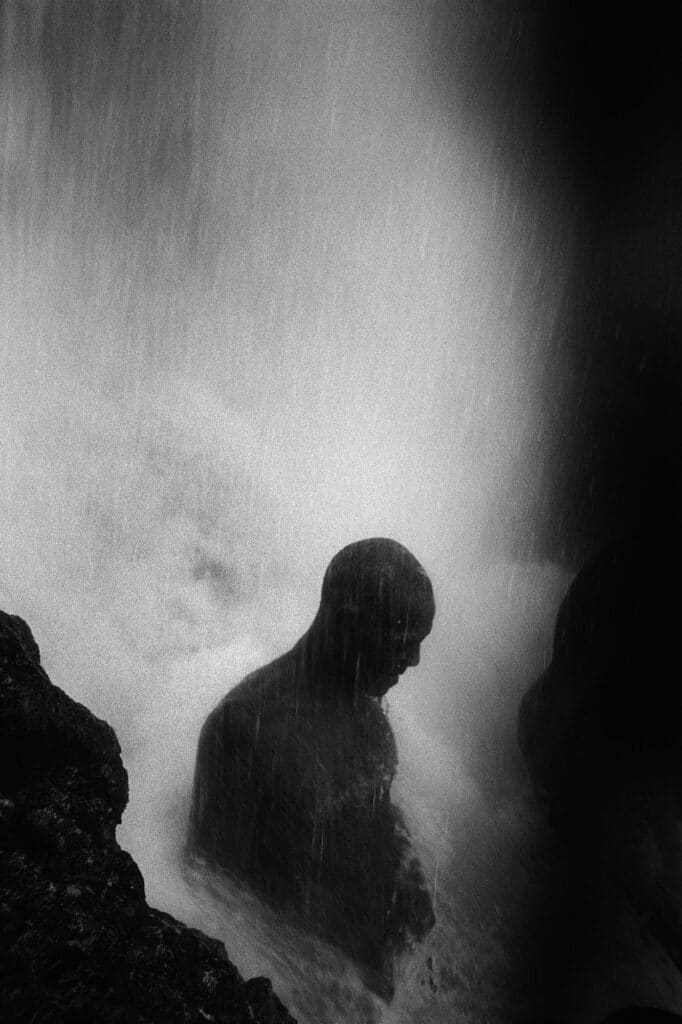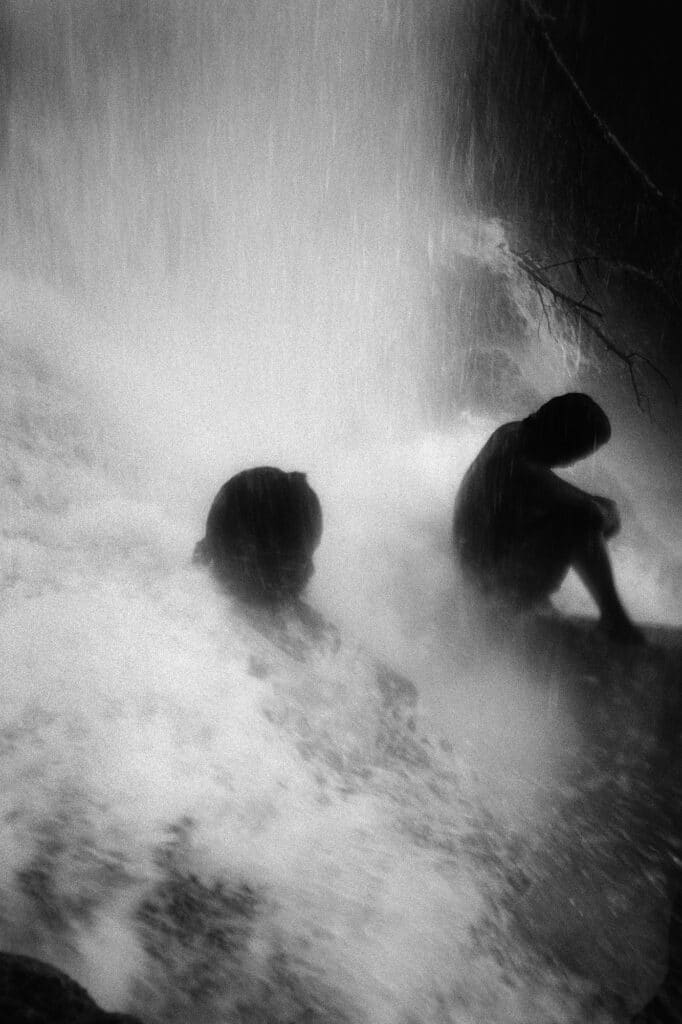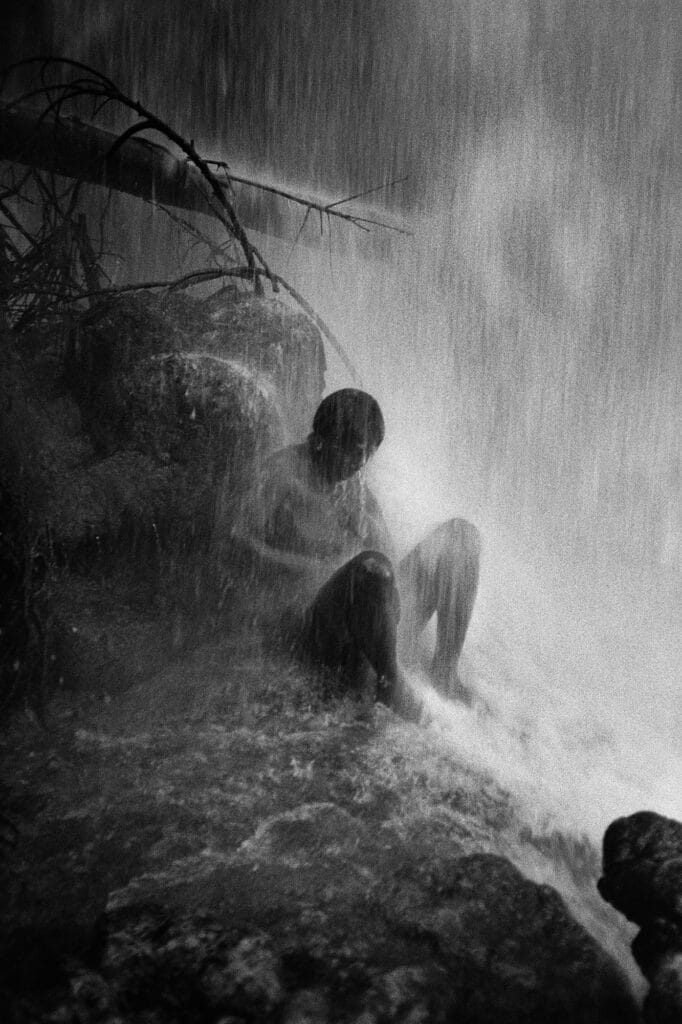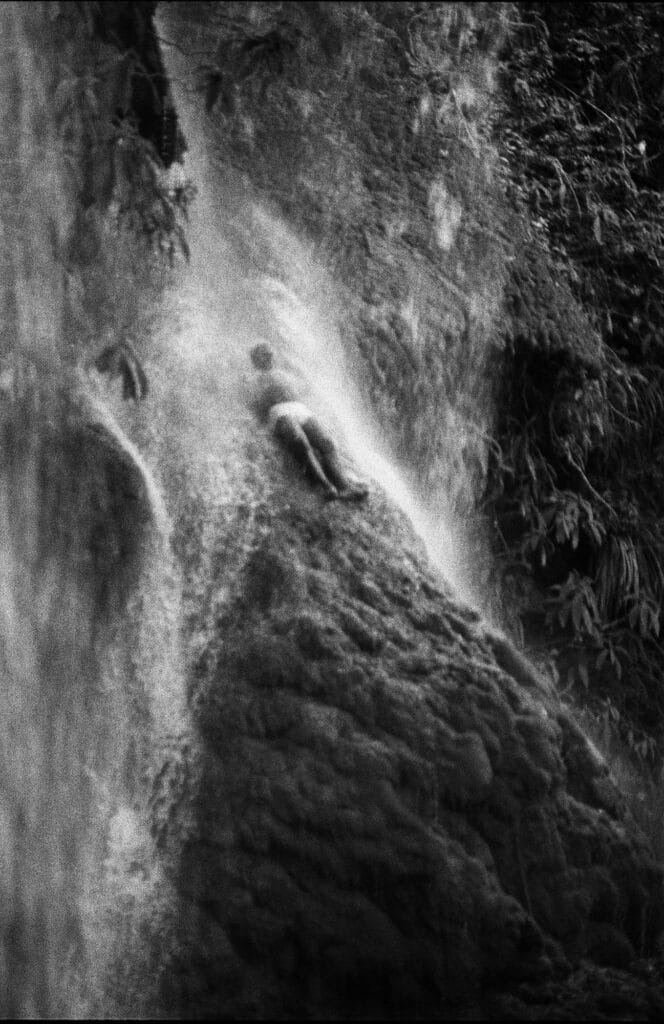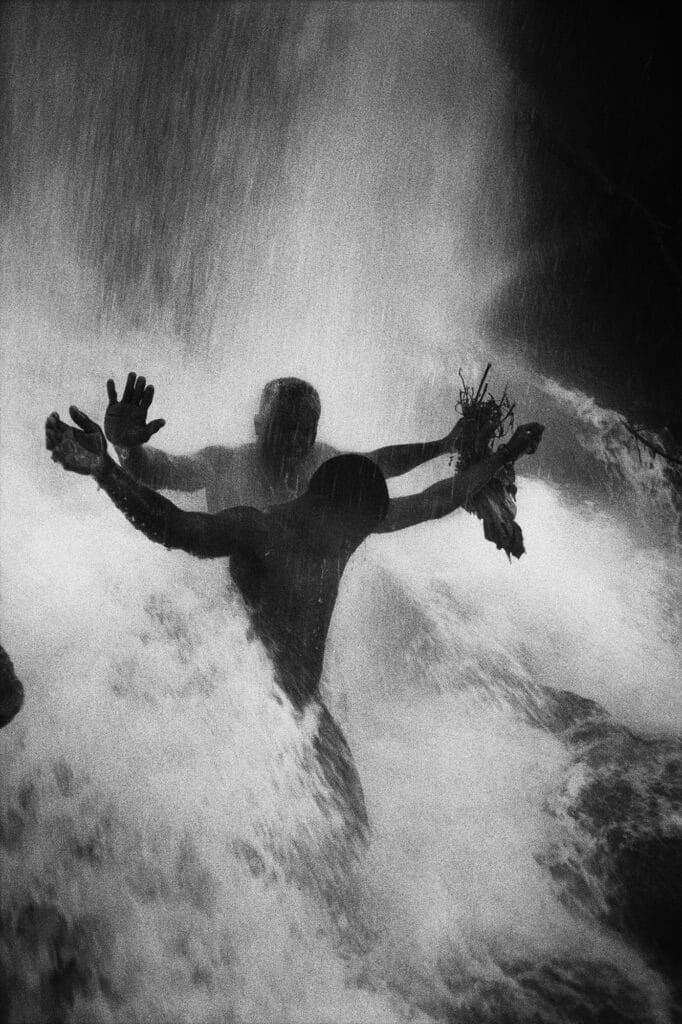Galembo’s long standing relationship to Haiti is particularly meaningful. Years of traveling throughout the island have translated to long-term friendships, which in turn led to her experiencing, rather than chronicling, indigenous traditions. Sodo is something of a departure for Galembo, whose practice of photographing peoples in ritualistic costumes has relied upon medium-format analog cameras and heavy equipment. In a hybrid approach nodding to Helen Levitt, who also employed black-and-white and color imagery in her studies of N.Y.’s East Harlem neighborhood, Galembo’s candid photographs depict celebrants in a snapshot-like style. Haitians of different ages and genders, their bodies in spontaneous and active forms of worship, are shown immersed in prayer, alone or with friends or family members.
The folio-sized book, which is bound in linen, was conceived by Xianlu Yi. Its front cover features a full sheet photographic reproduction of a cluster of silhouetted figures set into relief against the waterfall. One can sense the water’s natural powers and almost hear its roar. The book’s mise-en-scene, which was sequenced by Sangyon Joo and Kwan Hoon Lee, flows in evocative, slightly soft-focus black-and-white reproductions of drenched worshippers, their skin glistening. Most of the images are vertical, arranged singly on alternating pages. A short sequence of pictures in a horizontal format were printed recto-verso, which serves as a contemplative pause aligned with a supplicant’s spiritual release. A poem by Jean Léopold Dominique (1930-2000), a revered Haitian journalist and human rights activist, is reproduced in French and Creole, Korean and English, and on the rear cover, in English. His tribute to the site invokes complex emotions – hope, misery, mystery, joy – which are framed by the country’s turbulent history.
The inclusion of Jean Dominique’s poem, an integral textual and visual element in the book, voices the country’s troubling narrative arc of aspiration and trauma. Haiti is literally the poorest country in the western hemisphere. Compounding the nation’s political plight, economic hardships, and Covid challenges, the island suffered multiple natural and political calamities in the summer of 2021: a devastating earthquake; the assassination of its President and ensuing gang warfare disrupting the social order; and Hurricane Grace, which left a swath of death and destruction. And this year started with an assassination attempt on the current President. Yet Haiti is a country with a resilient population and an exalted history. The Haitian Revolution, which began in 1791 and ended in 1804, was a successful insurrection by self-liberated slaves against French colonial rule in Saint-Domingue – now the sovereign state of Haiti – is considered the only successful revolution of its kind.
Galembo shot her photographs with a point-and-shoot underwater camera. The simple device captures the tumultuous power of the waters in a lyrical fashion. The kinetic flow of the falls and ecstatic expressions of celebrants reveal a source of spirituality at once private and public. The pictures in Sodo may be counterposed to Galembo’s oeuvre of masked figures in ritual dress, which are rendered in color. The storytelling benefits from a monochromatic palette underscore the images’ sensual dimension while revealing emotional truths.
An agent of spiritual transformation, bodies of water have been photographically represented by numerous contemporary and historic figures, from Hiroshi Sugimoto’s sublime abstractions, Doris Ullman’s beatific depiction of a Gullah baptism in Roll, Jordan, Roll (1933), and Mary Bayard Wooten’s real photo carte-postales of religious traditions in South Carolina. During a time of Covid restrictions, visual engagement with spiritual connection is especially transporting, an antidote to the experience of dissociation – from self and community.
Galembo, like other diviners, undertook the difficult journey to Ville Bonheur, where it is believed that the Virgin Mary (Vjej Mirak [the Virgin of Miracles]) appeared to a farmer, in 1849. She describes a shared sacred site of devotion, surprised at its “freezing waters”during July’s high heat. In this way she, too, emerges as a pilgrim, erasing the too-familiar trope of privileged traveler who dons an ornamental picture hat, recording native customs from a removed cultural distance. Rather her personal engagement with indigenous belief systems evince a pictorial alchemy that expressively unfolds in her latest book.
Sodo: Haiti 1997-2001, text by Phyllis Galembo, poem by Jean Léopold Dominique. Produced in an edition of 300 copies by Datz Press, Seoul, Korea. A special edition of 30 copies is offered with a photograph.

